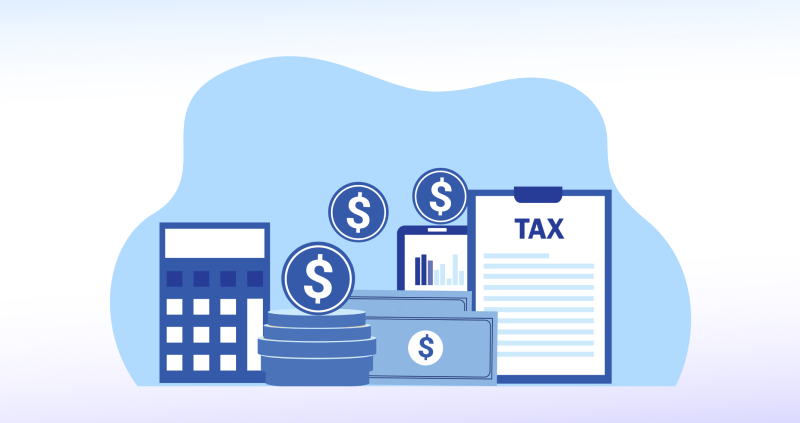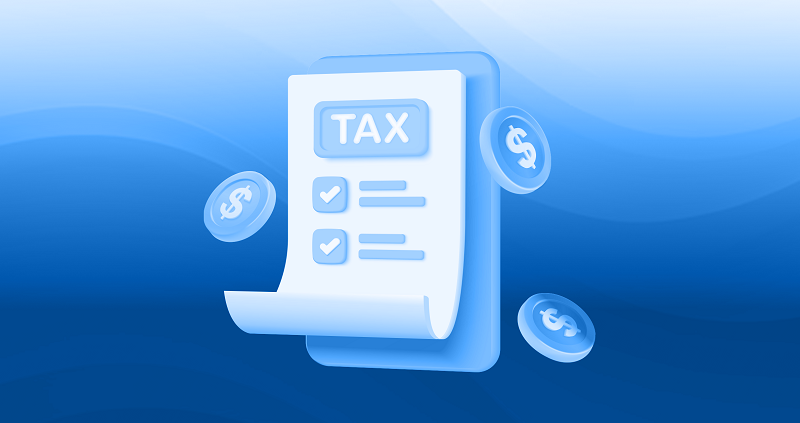How long does it take to get a tax refund?
Learn about when and how you can expect to receive your tax refund, what can cause delays, and how to avoid them.
Filing method matters: E-filing with direct deposit typically leads to the fastest refunds (around 21 days), while paper filing can take six to twelve weeks.
Delays are common: Inaccurate information and other errors, IRS backlogs, or claiming certain credits can slow down refunds.
Check your status: Using tools like the IRS “Where’s My Refund?” or your state’s online tracker can help you stay updated.
When will I get my tax refund?
After filing taxes, taxpayers may often wonder, “How long does it take the IRS to approve my refund?”.
While your refund time can be affected by when and how you file, here are some general timelines in regard to IRS and state refunds.
IRS refund timelines
The IRS does not provide you with an exact date your refund will arrive, but the way you file can influence how long you wait. Generally, an e-file with direct deposit is the fastest way to get your refund back, with paper filings often taking a bit longer.
The IRS refund timeline begins when your tax return has been accepted, which is generally 24 hours after filing your tax return. Once your return has been accepted, the following schedule can help you get a better estimate of when to expect your tax refund:
Filing method | E-file/direct deposit | Paper file/direct deposit | E-file/mailed check | Paper file/mailed check |
Estimated refund time1,2 | Up to 3 weeks | 6 weeks | 3–4 weeks | 6–8 weeks |
State refund timelines
Federal income taxes, which are levied by the IRS, and state income taxes, which are levied by your state’s taxing authority, are two separate things (although both are forms of income tax), meaning you may receive your tax returns at different times even if you happened to file them at the same time.
Similar to IRS refunds, how you file your state taxes could speed up or delay when you get your returns. Electronic filing tends to give you a faster refund (roughly two to three weeks), while paper filing can take a bit longer (about four to twelve weeks), but actual timelines vary by state. Therefore, you may want to check your state-specific website for the most accurate information.
How to check your refund status
If you want to confirm receipt of your tax return and track your refund, the IRS’s “Where’s My Refund?” tool allows you to check the status of your refund within 24 hours of filing. The tool updates your information once a day, and you only need the following to check your refund:
Your Social Security or individual taxpayer ID number (ITIN)
Your filing status
The exact amount on your tax return
Most states have their own online refund tracker, which you can use to check your state refund status. For example, California’s “Where’s My Refund?” site states the following refund times:
E-file: up to 21 days
Paper file: up to three months
Checking your state-specific refund tracker can help you get the most accurate information regarding your refund.
Common tax refund delays
If the IRS still hasn’t accepted your tax return or issued you a refund, you may be wondering, “When will I finally get my tax refund?”. While most refunds are generally issued in a timely manner, several factors can lead to a delay.
Some reasons include:
Filing errors: Errors in your tax return, including missing information, incorrect filing status, missing documents, and other simple oversights, typos, and miscalculations can delay the process.
You are claiming Earned Income Tax Credit (EITC) or Additional Child Tax Credit (ACTC): If you claim EITC or ACTC tax credits before February, you may expect a holdup, as, by law, the IRS cannot issue these refunds before mid-February.3
Paper returns: Manually processing paper returns may take longer than those filed electronically, which is reflected in the refund timeline table above.
Bank account or direct deposit delays: Issues with your financial institution, such as high-traffic periods or wrong account information, may impede the posting of your refund.
IRS backlog: IRS procedures, including staffing shortages, system upgrades, and high volumes of returns, may also lead to processing delays.
If you’re waiting past the refund timeline, you may want to check your status on the “Where’s My Refund?” tool or contact the IRS.
How to get your tax refund faster
Once you’ve filed your tax return, it’s mainly up to the IRS how long it will take your refund to be processed. While you can’t speed this step up, there are some steps you can take before and during the filing process to help expedite the process, including:
File early: Avoid waiting for the tax return deadline (usually April 15th) to file your taxes. The quicker you file, the sooner your processing time will begin.
Use e-file and direct deposit: E-files tend to be the more efficient method for filing, as they can be processed more quickly than paper returns. Direct deposit will allow you to receive your refund directly into your bank account, rather than waiting for a check in the mail.
Keep your documents organized: Keeping your tax records and documents organized can help you avoid mistakes, which can lead to delays when filing your tax return.
Double-check your information: Small mistakes can trigger a manual review of your return, so you might want to double-check that all of your information is entered correctly (e.g., name, Social Security number, filing status, account name, etc.).
While these strategies won’t guarantee a faster refund, they might help you file your tax return more efficiently.
Best ways to use your tax refund
Receiving a tax refund can be a unique opportunity to get your financial goals moving. Once you’ve gotten your return, you can consider how to efficiently use those funds to improve your financial situation. Some options may include:
Build an emergency fund: An emergency fund can help you get through unforeseen expenses without completely derailing your finances. If you don’t have one yet, this may be a chance to get started.
Pay down debt: If you are working towards paying off debt, your tax refund might help you get ahead. You might consider allocating those funds to your highest-interest debt.
Boost your savings: Extra cash from your refund might also incentivize you to save. Options like high-yield savings accounts or certificates of deposit (CDs) tend to offer higher interest rates than traditional savings accounts, allowing you to boost your funds.
- Reward yourself: While extra cash, like your tax return, can help you make progress towards financial goals, rewarding yourself can help you stay motivated. Consider setting aside a small portion for something fun and enjoyable.
Bottom line
Most taxpayers can expect their federal tax refund within a few weeks, especially if filing electronically with direct deposit. Paper returns, errors, and certain credits can extend the timeline significantly. Staying organized, filing early, and double-checking information can help reduce delays, while tools like “Where’s My Refund?” keep you informed along the way.
If you’re looking for ways to get more out of your tax refund, Raisin is here to help. The Raisin marketplace gives you access to a variety of high-yield savings products to help boost your savings. Explore account types, compare interest rates, and sign up today to start maximizing your savings potential!
FAQs on how long it takes to get a tax refund
Does the IRS issue refunds on weekends or holidays?
No. Refunds are processed only on business days, so weekends and holidays may extend your wait time.
Can I get my refund early with a tax advance loan?
It depends. Some tax preparers offer refund advance loans, but they may come with fees or interest. This gives you early access to part of your refund before the IRS processes it. Keep in mind that refund-advance products are short-term loans from private providers; the IRS does not offer them.
What happens if my direct deposit is rejected?
If your bank account information is incorrect or rejected, the IRS will mail a paper check to the address on file. This typically adds another six to eight weeks of processing time.
Do amended returns take longer to process?
Yes. Amended returns can take up to 16 weeks or more to process, much longer than a standard return.
The above article is intended to provide generalized financial information designed to educate a broad segment of the public; it does not give personalized tax, investment, legal, or other business and professional advice. Before taking any action, you should always seek the assistance of a professional who knows your particular situation for advice on taxes, your investments, the law, or any other business and professional matters that affect you and/or your business.


